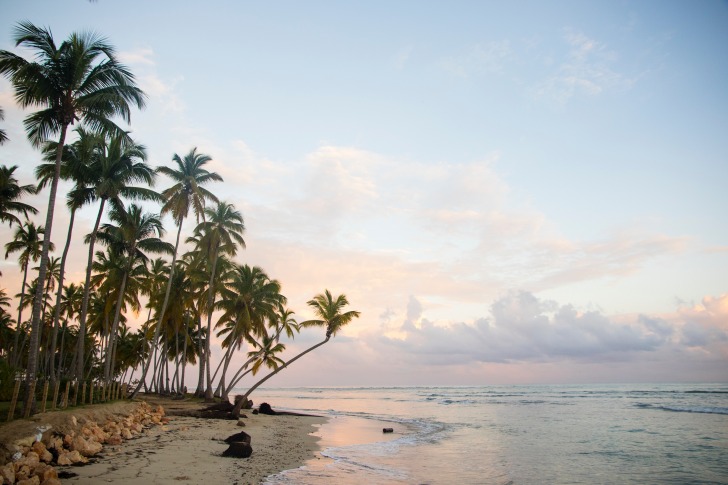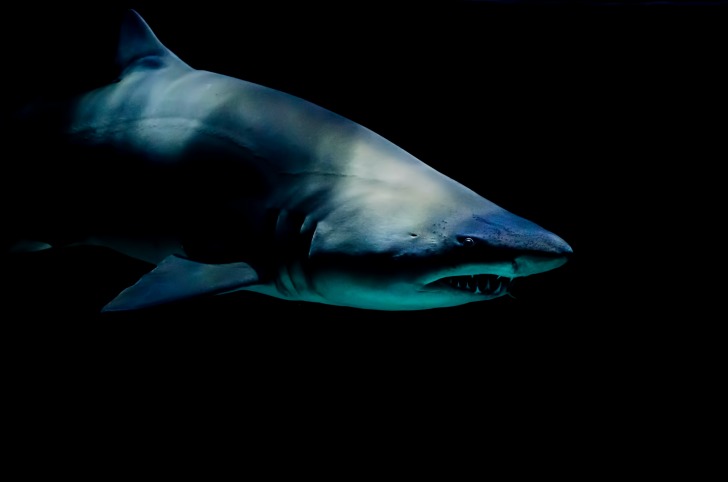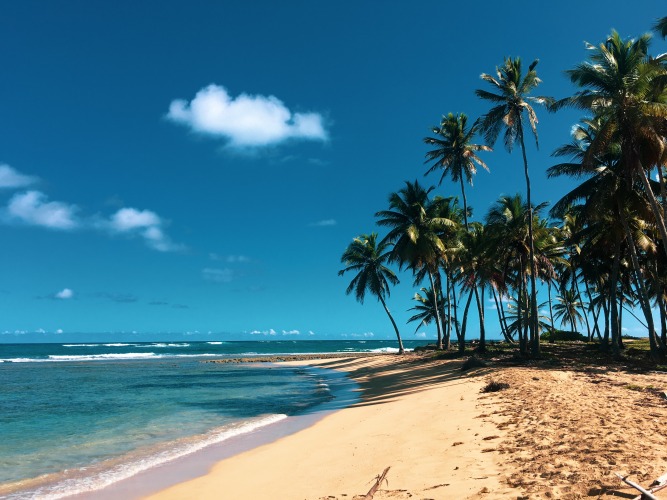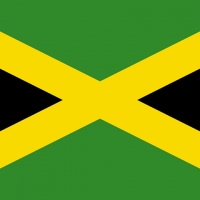The Dominican Republic is a popular destination in the Caribbean.
You’ll hear all about beaches, boating, and more – all involving going into the water.
How safe is it to go into the water, though?
You’ll want to know if you have to worry about sharks so that you don’t stress about a potential shark attack.
Contents
- So… Are There Sharks in the Dominican Republic?
- Shark Species in the Dominican Republic
- Is It Safe to Swim in the Dominican Republic
- Interesting Shark Facts in the Dominican Republic
- Sharks in Freshwater vs. Saltwater
- 3 Safety Tips for Swimming in Shark-Infested Waters
- Summary
- Dominican Republic Safety Overview
- Frequently Asked Questions
So… Are There Sharks in the Dominican Republic?
Shark sightings are rare – and shark attacks are even rarer.
That doesn’t mean that they don’t exist throughout the Dominican Republic, however.
Approximately 40 species are thought to be living in the area.
It is important to remember that the Dominican Republic shares the island with another country – Haiti.
There are going to be more sharks on the Haiti side because of its proximity to the Caribbean Sea as well as the number of sandbars and such that many sharks enjoy spending time in.
Punta Cana, one of the largest tourist destinations in the DR, has sharks in the water, but they are usually in very deep waters.
As such, sightings are not reported very often.
One of the reasons you won’t see many sharks is that the coastline is surrounded by a coral reef.
Whale sharks are one of the more commonly seen sharks around the beaches of DR, but they are going to be harmless to you.
As such, you won’t even typically hear people making a big deal if a whale shark is spotted.
While there are over 400 species of sharks in the world, there are only 10 that are considered common in the Dominican Republic:
- Caribbean reef shark
- Nurse shark
- Shortfin mako shark
- Silky shark
- Blacktip shark
- Oceanic whitetip shark
- Great hammerhead
- Scalloped hammerhead
- Lemon shark
- Tiger shark
All of these sharks are known as saltwater sharks, which means that they need the salt content in the water to survive.
The ones that are more likely to attack include the oceanic whitetip shark and the hammerheads.
However, unless you’re diving off of a boat in some of the deeper waters, it is unlikely that you will encounter these.
One of the more common sharks you’ll encounter in some of the bays and inlets is the nurse shark – and they don’t even have teeth – which means they aren’t capable of attacking you.
The whale shark, since it is fairly common (and harmless) is one you should be able to identify when you see it.
This way, you won’t have to panic for no reason. It is slow-moving and is known as a carpet shark.
They are filter feeders, so they feed almost exclusively on plankton and small fish.
As such, they pose no harm to humans.
The Caribbean reef shark is also easily identified because they are about 10 feet in length with a gray hue.
They have a triangular extra tip on the second dorsal fin, too.
Is It Safe to Swim in the Dominican Republic
It is safe to swim in the Dominican Republic – and many people visit the island every year to do exactly that.
There are entire beaches where it is considered extremely safe to be in the water, whether you are swimming or participating in any number of other water activities.
Some of the top places for swimming in DR include:
- Playa Rincon
- Cayo Levantado
- Bavaro Beach
- Playa Dorado
While you won’t have to worry about sharks (even if you see them, they are unlikely to attack), there are other creatures in the water that can pose problems.
One of the biggest issues is jellyfish.
Typically, you can spot them in the water and swim away, but some will drift toward you and sting you when you least expect it.
Lifeguards are not present at many of the beaches, which means that there won’t be safety/rescue equipment nearby.
Hurricane season, which is between June and November, can leave the sea especially rough.
It can lead to strong waves and high swells.
If you’re not an experienced swimmer, you won’t want to go out very far.
Additionally, there will be local warning systems to tell you about sea conditions – and you’ll want to consult with these before going into the water.
One of the biggest issues for people in the water is drinking while intoxicated.
It is heavily advised not to drink before going into the water as it can increase the likelihood of drowning.

Interesting Shark Facts in the Dominican Republic
There are all sorts of facts about sharks that you should know about in the Dominican Republic.
The country is surrounded by the Caribbean Sea and the Atlantic Ocean.
It is known to have some of the best beaches, resorts, and hotels.
With so many attractions going on, many sharks want to stay away from the area because they don’t want so much activity going on.
Sharks are extremely sensitive to vibrations in the water.
Sharks are often in the water, even when you can’t see them.
The reef does a great job of keeping them away, but that doesn’t mean they can’t enter to reach the coastline.
If you go parasailing, you may be able to see some of the smaller schools in the water.
The shortfin mako shark is one of the more frequent sharks that are spotted – and some will even be able to catch them on a fishing line.
Typically, they can reach sizes of up to 13 feet.
Caribbean reef sharks have such a reputation for being safe around humans that many of the snorkeling and other guides around DR will actually turn to feed these sharks into a show.
It is a practice that is both popular as well as controversial.
The most recent fatal attack was in Boca Chica, which happened in 2010.
When you want to learn more about sharks, there are snorkeling cruises where you can swim with nurse sharks and stingrays.
Most of these are found throughout Punta Cana.
Shark cage diving is another possibility, which is usually where you’ll go a lot further out into the water.
You’ll have the opportunity to see sharks up close and in their natural habitat while you remain safe inside a cage.
In these instances, you will need to have your scuba diving license.
It is common to dive with tiger sharks in the Dominican Republic because they are inquisitive as a species.
The rarity of an attack is small. In the last 50 years, there have only been three fatal incidents reported.
In 2017, the Dominican Republic announced that there was a ban on shark fishing.
Sharks thrive in warm, saltwater – at least most of the species do.
The salinity in shark blood depends on salt from the water it swims in and also helps with its buoyancy.
If sharks lose too much of the salt concentration in their blood, their cells bloat, leading to their death.
Some sharks have evolved over the years, allowing them to conserve some of the salt within their cells.
Some also have lower salt concentrations in their blood.
This allows them to live in freshwater.
Freshwater sharks are not very common – and it is believed that there are only 6 species in the world.
This includes:
- Speartooth sharks (found in Papua New Guinea and Northern Australia)
- Ganges sharks (found in rivers in India)
- Bull sharks (found throughout the world)
- Borneo River sharks (found around Southeast Asia)
The warm saltwater around the Dominican Republic makes it popular for sharks.
However, as a result of the coral reef, you won’t find many sharks near the coast.
Instead, you will have to travel into deeper water.
As such, most of the sightings come from commercial fishermen rather than tourists.

3 Safety Tips for Swimming in Shark-Infested Waters
Shark-infested waters are not where you want to be – and you’ve got a much higher survival rate if you stay out of them.
However, there are some tips if you insist on going into such bodies of water.
1. Don’t Go In Alone
Sharks don’t want confrontation any more than you do.
They’ll most likely stay away from groups.
If you are a lone swimmer, you’re much more appetizing to a shark.
2. Avoid Being Near Fishing Boats
Fishermen may have bait or bait-loaded lines in the water.
This will attract sharks because they know fish will be nearby.
If you’re in the water, too, they could easily mistake you for a meal.
3. Don’t Enter If You’re Bleeding
Sharks are attracted to blood – and they have the ability to detect blood in the water from about three miles away.
Whether you’re menstruating, have a small cut or even a scab, it’s best not to enter the water.
Summary
Whether you’re visiting DR or live in the area, you can go into the water without having to worry about sharks.
While you may spot one, it is unlikely to attack.
Shark attacks are quite rare throughout the country.
There are dozens of species of sharks in the area, but unless you’re leaving the coastal area on a boat, you probably won’t see one.
Instead, there are various excursions that you can go on where you’ll have the opportunity to see sharks and even interact with them.
If you do go into the water, remember that there are other dangers besides sharks.
Take the time to do your research so you know how to keep yourself safe when you go swimming in the Dominican Republic.
Dominican Republic Safety Overview
READ THE FULL REPORT: Dominican Republic Safety Review
Safety Index:
- OVERALL RISK: MEDIUM
- TRANSPORT & TAXIS RISK: MEDIUM
- PICKPOCKETS RISK: MEDIUM
- NATURAL DISASTERS RISK: LOW
- MUGGING RISK: MEDIUM
- TERRORISM RISK: LOW
- SCAMS RISK: MEDIUM
- WOMEN TRAVELERS RISK: MEDIUM
Frequently Asked Questions
How many people die of shark attacks every year?
Not as many as you think.
Across the globe, there are about 75 shark attacks every year and only about four of them are fatal.
Are there great white sharks in the Dominican Republic?
There are no great white sharks reported in or around DR.
It is believed that the coral reef acts as a natural barrier to them.
Is it true that sharks don’t like the way that humans taste?
Actually, yes.
Most of the time, sharks will take one bite and realize that they don’t taste good.
They’ll swim away after that – the question is really about how big of a bite they’ll take and how you can prevent that from happening at all.
Are there tips for surviving an attack?
Avoid being in the water when you know there are sharks present.
As soon as one is spotted, begin swimming to shore.
If one does attack you, try to gouge its eyes or gills so that you can stun it enough to get away.












Very Informative. Currently in the DR and heard there was a shark sighting yesterday so this was helpful information.
It is generally safe to go into the water in the Dominican Republic, despite the presence of sharks, as long as you follow safety precautions and avoid swimming alone, near fishing boats, or if you have open wounds.
As a local, I can confidently say that swimming in the waters of the Dominican Republic is safe and shark attacks are extremely rare.